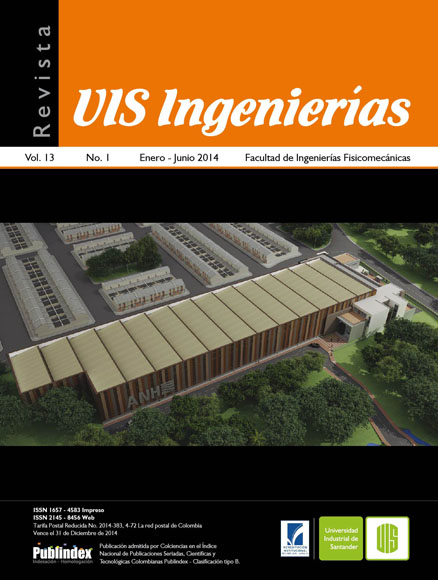Comparative study of the indicated cycle of a diesel engine using simulation CFD and experimental data
Published 2014-03-23
Keywords
- heat transfer,
- CFD solver,
- indicated cycle,
- predictive model,
- diesel engine
How to Cite
Abstract
In this paper, a comparative study between numerical simulations and experimental data of the indicated cycle of a direct injection diesel engine is presented. A CFD package and a predictive model were used to simulate several engine operating conditions. Results were compared with experimental data obtained from an engine test bench. The comparison was based on indicated-cycle parameters such as pressure, temperature, heat release, power, effciency, specifc fuel consumption and mean effective pressure. Results show that in all cases simulated cylinder-pressure curves are in very good agreement with the experimental results. For the low-load mode, differences are around 5% at maximum pressure peak. On the other hand, temperature and heat release rate curves present signifcant differences between simulations and experiments. This could be a consequence of the combustion and heat transfer models used for the simulations. However, it is shown that the use of CFD tools for studying combustion phenomena in diesel engines is highly convenient.
Downloads
References
- MERKER, G., SCHWARZ, C., STIESCH, G., OTTO, F., (2004); Simulating Combustion. Simulation of combustion and pollutant formation for enginedevelopment. Editorial Springer. Berlín, 72-86.
- MILES, P., MEGERLE, M., SICK, V., Richards, K. et al., (2001); The Evolution of Flow Structures and Turbulence in a Fired HSDI Diesel Engine, SAE Technical Paper,1-9.
- BAUMGARTEN, C., (2006); Mixture Formation in Internal Combustion Engines, Editorial Springe., Berlin, 32-38.
- BASHA, S., Raja GOPALA, K., (2009); In-cylinder fluid flow, turbulence and spray models—A review. Renewable and Sustainable Energy Reviews, Volume 13, Issues 6-7, 1620-1627.
- WESTBROOK, Ch., MIZOBUCHIBO, Y., et al (2005); Computational Combustion, Proceedings of the Combustion Institute, Volume 30, Issue 1, 125- 157.
- Heywood J.B., (1998); Internal Combustion Engine Fundamentals, Editorial McGraw-Hill, New York, 676-682.
- VERSTEEG H., MALALASEKERA W., (1995); An Introduction to Computational Fluid Dynamics. The Finite Volume Method, 1a edición, Longman Scientific & Technical, London, 2-7.
- NORDIN, Niklas., (2001); Complex Chemistry Model of Diesel Spray Combustion PhD thesis, Chalmers University of Technology, Goteborg, 4-15.
- GUTIÉRREZ, E. I., (2008); Modelado Numérico de la Atomización y Evaporación de un Chorro Diesel Mediante Análisis CFD, Tesis de Maestría, Universidad de Antioquia, Medellín, Colombia, 13- 19.
- STIESCH, G., (2005); Modeling Engine Spray and Combustion Processes. Editorial Springer. Berlín, 109-112.
- ARMAS, O., GARCÍA-CONTRERAS, R., RAMOS, A., (2013); Impact of alternative fuels on performance and pollutant emissions of a light duty engine tested under the new European driving cycle. Applied Energy, Vol. 107, Elsevier, England, 183-190.
- YEHLIU, K., ARMAS, O., RANDY, L., VANDER Wal, R., BOEHMAN, A.L., (2013); Impact of engine operating modes and combustion phasing on the reactivity of diesel soot. Combustion and Flame, Vol. 160 (3), Elsevier, Pages 682-691.

